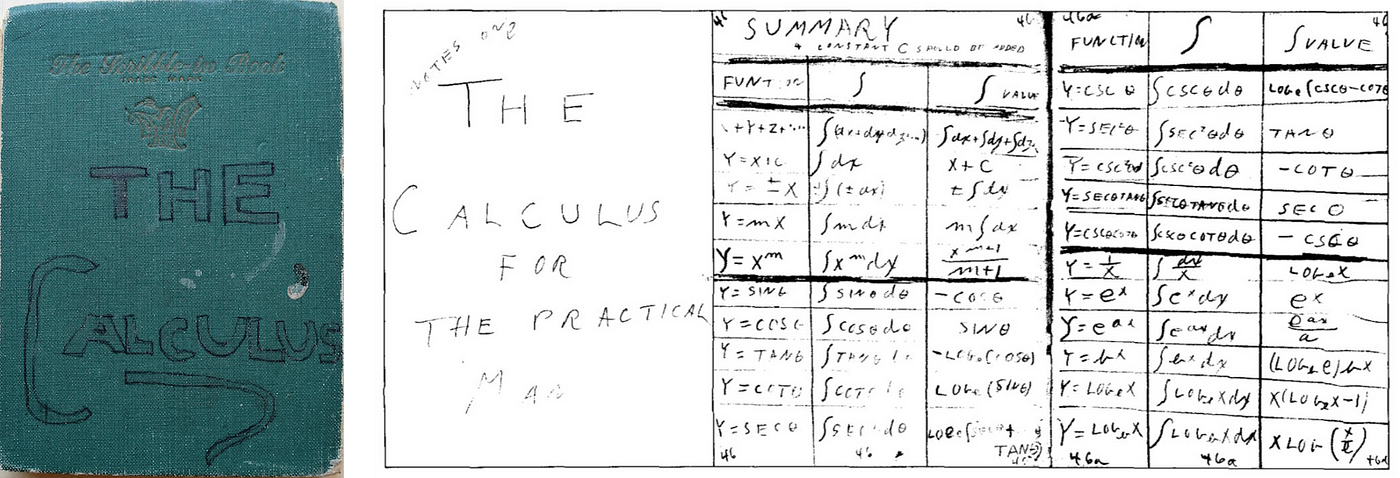Finding Derivatives of Complicated Functions According to Feynman
A Clever Way to Quickly Take Derivatives Used by Richard Feynman

Richard Feynman was an American theoretical physicist and co-recipient of the 1965 Nobel Prize in Physics (together with the American physicist Julian Schwinger and the Japanese physicist Shinichiro Tomonaga). He is one of the best-known scientists in the world. According to Wikipedia, “in a 1999 poll of 130 leading physicists worldwide by the British journal Physics World, he was ranked as one of the ten greatest physicists of all time”.

Feynman made several fundamental contributions to physics. These include the path integral formulation of quantum mechanics, the theory of quantum electrodynamics (developing pictorial representations describing the behavior of subatomic particles, the famous Feynman diagrams),
and the theoretical explanation of the superfluidity of liquid helium. He also pioneered the field of quantum computing, introduced the concept of nanotechnology, among many other things. Feynman was also a famous popularizer of physics.

Feynman once described his view of science:
“If you expect science to give all the answers to the wonderful questions about what we are, where we’re going, what the meaning of the universe is… you could easily become disillusioned and look for a mystic answer…[W]e’re exploring, trying to find out as much as we can about the world. People [ask], “Are you looking for the ultimate physics laws?” No, I’m not. I’m just looking to find out more about the world. If it turns out there is an ultimate law which explains everything, so be it; that would be very nice to discover. If it turns out it’s like an onion, with millions of layers… then that’s the way it is. But whatever way it comes out, it’s nature, and she’s going to come out the way she is! Therefore we shouldn’t pre-decide what it is we’re going to find, except to try to find out more. If you think that you are going to get an answer to some deep philosophical question, you may be wrong — it may be that you can’t get an answer to that particular problem by finding out more about the character of nature. But I don’t look at it like that; my interest in science is to find out more about the world, and the more I find out, the better.” — Richard Feynman
Feynman Calculus Notebook
In the early 1930s, when Feynman was at Far Rockaway High School, he assembled a set of handwritten notes based on a book called Calculus for the Practical Man. At that time, it was unusual for a high school student to have a calculus instructor. The Practical Man series (by J.E. Thompson) were self-instruction books for those “who wish[ed] to obtain a practical mastery of some of the more usual and directly useful branches of the science without the aid of a teacher.” Feynman’s notes followed the book closely, and he “quite literally read Calculus for the Practical Man from cover to cover.”
As noted by Physics Today, “Feynman’s calculus notes illustrate one of the famous physicist’s defining qualities: his insatiable curiosity… When he found a subject that interested him, he was not about to wait for the right teacher to come along; he was determined to master it himself.”

Differentiating à la Feynman
This section follows closely this book by Feynman, Leighton, and Sands which I will henceforth call FLR. In it, Feynman describes a clever way to quickly evaluate derivatives of complicated, multi-product functions.
Derivatives of Simple Functions
The only derivatives one needs to know to understand Feynman’s algorithm (explained in the next section) are of the following type:

Derivatives of More Complicated Functions
The example in FRS, which will be used here (apart from a constant pre-factor in the first term), is given by:

Following Feynman, the first step is to repeat the two terms in f(x), each multiplied by a yet undetermined expression as follows:

Both terms contain a product of factors in the numerator and another product of factors in the denominator. For convenience, we can write this expression as:

The expressions inside the brackets will be sums of functions. To obtain each term of these sums one applies the following 3-step algorithm. Consider, for example, the first factor, namely, (1+2x²). The three steps are:
- This factor becomes the denominator of the first term inside the first of the two brackets
- The exponent of this factor, which is 1, becomes the pre-factor of the first term inside the first bracket
- The derivative of this factor becomes the numerator of the first term inside the first bracket
The following schematics makes the algorithm more concrete:

Now, applying the algorithm to the second factor of the first term of f(x):

When we apply the algorithm to all terms we obtain the derivative of f(x), namely:

Generalizing the Algorithm
Eq. 2 is a sum of two terms, each one having the following form:

The general form of the derivative of Eq. 8 is then:

Thanks for reading and see you soon! As always, constructive criticism and feedback are always welcome!
My Linkedin, personal website www.marcotavora.me, and Github have some other interesting content about mathematics and other topics such as science, history of science, machine learning, deep learning, finance, and much more! Check them out!





